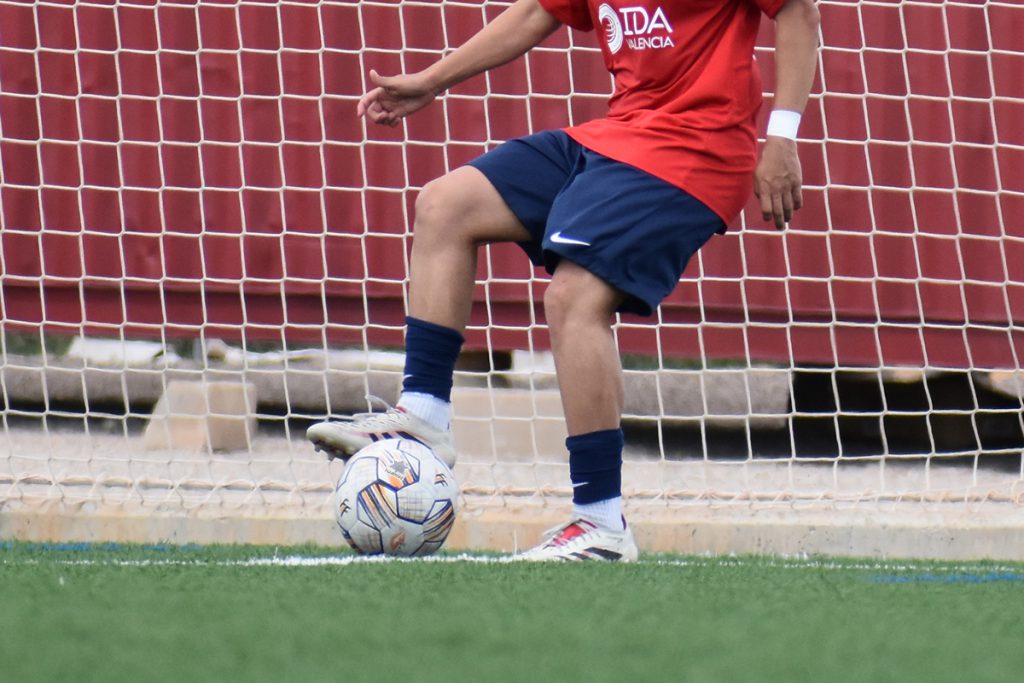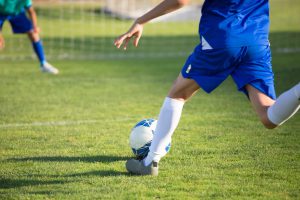Train your weak foot and you’ll instantly raise your game—not just by adding a new skill, but by unlocking more freedom on the pitch. Players who can pass, dribble, or shoot comfortably with both feet are harder to defend, more versatile, and often more valuable to their team.
Yet, most players shy away from their non-dominant foot because it feels awkward or unreliable. That hesitation creates predictable movement. But when you build that weak foot through repetition and smart soccer training, you add a new level to your game.
Let’s explore exactly how to build comfort and confidence with your weaker foot, and most importantly, how to use it when it really counts: during live match play.
Table of Contents
Why Your Weak Foot Matters
Relying on only one foot limits your movement, your options, and your effectiveness—especially under pressure.
Here’s what improving your weak foot unlocks:
✅ Smoother transitions in tight spaces
✅ More passing lanes and angles
✅ Better decision-making under pressure
✅ Confidence to receive or shoot in any direction
Just think of the top pros—most of them aren’t ambidextrous by nature. They got there with intentional, daily work. You can too.
Step 1: Rewire the Muscle Memory 🧠
Let’s face it: your weak foot feels weird because your brain hasn’t wired that side the same way. Fixing that starts with consistency, not intensity.
Daily Touches = Long-Term Comfort
Start by setting aside 15–20 minutes per day to work on:
- Wall passes (short and long)
- Toe taps and touches
- Inside/outside foot control
- Light juggling
Even in a small space, you can rack up hundreds of reps. At this stage, it’s not about power—it’s about repetition and rhythm.
Step 2: Simple Drills That Build Confidence
As comfort grows, move into more structured weak foot drills:
⚽ Passing & Receiving Drill
- Use cones or walls
- Pass and receive with your weak foot only
- Focus on touch quality and body positioning
🎯 Weak Foot Finishing
- Start close to goal
- Aim for placement over power
- Try volleys, rolling shots, and weak-foot headers too
🧭 1v1 Movement Patterns
- Practice shifting the ball to your weak side and exploding into space
- Add cones or a passive defender to simulate pressure
By keeping it progressive, you build both the mechanics and the confidence to trust your foot.
Step 3: In-Game Application Strategies
So now you’ve been training your weak foot—but how do you actually use it in a real match without second-guessing yourself?
🧠 Make it Intentional
Go into matches with a clear goal: “I’ll make five passes or one shot with my weak foot today.”
This shifts your mindset from avoidance to active usage.
⏳ Start in Low-Risk Moments
Use your weak foot when:
- Passing backward or sideways under no pressure
- Switching play
- Making short combination plays in midfield
Then build up to higher-risk situations:
- Through balls
- Crosses
- Finishing chances
Step 4: Game-Like Pressure Training
Your weak foot won’t improve fully in isolation—you need to replicate match speed and decision-making.
Try this setup:
- Tight-space rondos using only your weak foot
- 2v1 drills with mandatory weak-foot finishing
- First-touch + pass drills at game pace
Bonus tip: film these drills. Watching your form helps you identify habits and see real progress.
Step 5: Work on Weak Foot Mentality 🧠
Most players have the physical ability—they just lack belief in the moment. That’s mental, not technical.
Here’s how to fix that:
🔁 Reframe mistakes – A bad pass isn’t failure; it’s data.
✅ Celebrate small wins – One clean weak-foot pass in a game? That’s progress.
🧘 Visualize – Before a match, picture yourself using your weaker foot under pressure. See it succeed.
Confidence is a skill too.
Step 6: Track Your Progress
If you’re serious about improving, you need feedback.
📓 Keep a simple training journal:
- “30 passes left foot today—felt more natural.”
- “Scored one weak-foot goal in scrimmage.”
This helps build motivation and keeps your focus on the long game.
Common Mistakes to Avoid ❌
❌ Only using your weak foot in training
If you never test it in matches, it’ll never stick.
❌ Trying to hit power shots too early
Work on control and placement first—then add power gradually.
❌ Training without structure
Random touches aren’t enough. You need focused drills.
❌ Neglecting your dominant foot
Yes, build your weak side—but don’t let your strong foot regress.
Own Both Feet, Own the Field
If you want to rise above the average player, you need to train your weak foot until it’s no longer a liability—but a weapon. You’ll open more angles, move more freely, and feel more confident on the ball no matter the situation. It’s one of the clearest signs of a complete, modern footballer.
And if you’re working within a training structure like a football academy, you’ll see how both-foot training is embedded into every drill, every session, every decision.
Start small. Stay consistent. Trust the work. Your weak foot won’t be weak for long. ⚽🦶🔥




